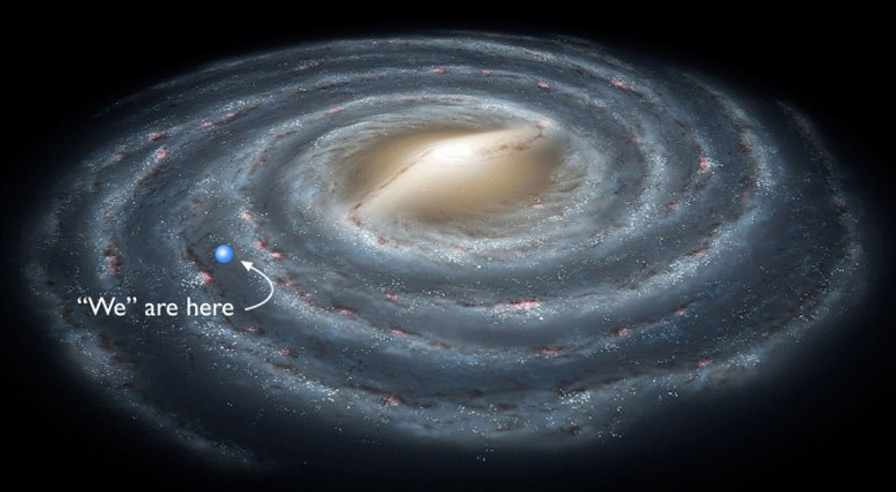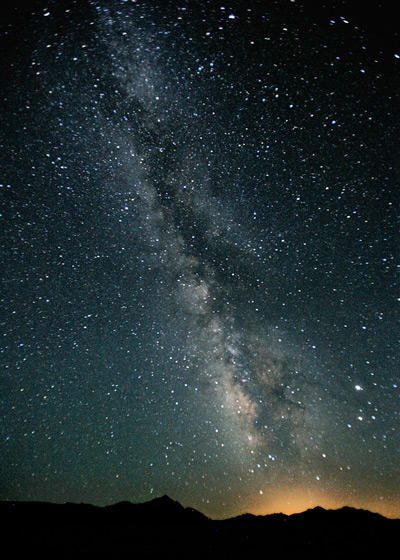The Milky Way |
||
| The Milky Way is the galaxy that contains our Solar System. Its name "milky" is derived from its appearance as a dim glowing band arching across the night sky whose individual stars cannot be distinguished by the naked eye.
From Earth the Milky Way appears as a band because its disk-shaped structure is viewed from within. Help with the next section: a light year is the distance that light can travel in one year: 9.46 trillion kilometres (5.88 trillion miles). And a trillion is: 1,000,000,000,000 - 1 followed by 12 zeros. A billion is 1,000,000,000 - 1 followed by 9 zeros. The Milky Way is a barred spiral galaxy that has a diameter usually considered to be roughly 100,000 to 120,000 light-years but may be 150,000 to 180,000 light-years. The Milky Way is estimated to contain 100 to 400 billion stars, although this number may be as high as one trillion. There are probably at least 100 billion planets in the Milky Way. The Solar System is located within the disk, about 27,000 light-years from the Galactic Center, on the inner edge of one of the spiral-shaped concentrations of gas and dust called the Orion Arm.
|
The Milky Way seen from Earth | |
|
||
By Steve Jurvetson - Flickr, CC BY 2.0,
|
||
The exact number of galaxies in the universe is has not been determined, although estimates suggest there are between 200 billion and 2 trillion galaxies. |
||
 |
||
The Solar System page 14 |
||
